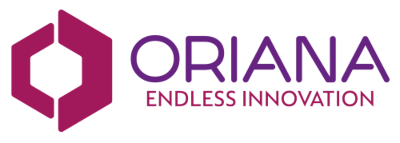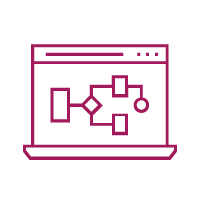The Next Generation of Business Analyst
At Oriana we have a strong opinion about what and how no-code and low-code platforms can be deployed in business. We also have a very sharp focus on all things back-office.
It’s not as if we always had this opinion. Like many of the best things in life, it evolved, naturally, and nurtured by the environment and the great customers around us. Clear focus, customer inputs, developer demands and business analyst opinions helped shape how our platform looks and performs today.
So what is our opinion?
Similar to the opinion of many of the industry’s best low-code analysts, we believe that no-code is an aspiration when it comes to the world of complex core applications in business. While no-code has no doubt impacted the software engineering and business world for the better, we know from working with our customers that deep integrations, complex business logic and bespoke challenges will always need coding and more importantly, a coding mindset to solve the problem. Or perhaps until AI finds its intelligence and can replace us all.
No-code removes this coding mindset or thinking process in many cases due to the inherent guided approach. This is one of the reasons we feel, in our niche of the back-office, the speed advantage of no-code can at best stretch its boundaries as far as simple applications or mock-ups to move decisions and business cases forward or empowering citizen developers to extend the core processes with simple mobile applications. The more complex the solution, the advantages of traditional coding often erode the benefits of no-code.
Processes
Our customers continually remind us that back-office modernization will heavily depend on process. Any digitalization project will [or should] start with a complex process mapping exercise. Many times, customers don’t have their processes documented sufficiently. With complex systems, process mining can be a great approach to identify where data goes and gaps in the data flow can help locate human workarounds. But, process mining aside, your people are the best source of mapping the real process flow.
UI
We also feel that a structured approach to UI best serves the back-office environment of our clients back-offices. Guiding the design approach with pre-defined suggested layouts and a consistent look and feel provides benefits across the organisation in terms of time saving, training and onboarding as well as providing a consistent look and feel for your employees to easily identify with.
A common theme in our client engagements is the need to provide the right information to the right person in the right format at the right time, so UI plays an important role in how people receive and read that information. This helps shape our approach to how applications can be laid out and designed. We offer flexibility in how an application looks but within the constraints of vertical and horizontal screen splits.
Logic and Data
Our choice of language for the low-code tool, used to customize your business logic is also strategic. Fundamentally the business application layer either integrates with a database or has its own database. This might be a sophisticated database like an ERP system or something smaller, however a database it is. To manage and interrogate this data, SQL has and will continue to be one of the main tools of choice among our customers. SQL is often widely understood and often more commonly available than other coding languages. It might also be something your leadership level has experience in from way back when as they journeyed through education.
While it is in demand, as many coding skills are, it is more widely available to source from. We also don’t put an abstraction layer on our code. If the data is in a database, why hide the fact that SQL is often required? We prefer this level of transparency with our clients.
So, SQL was our logical choice of language to provide customisation on our low-code platform.
One small step for Oriana, one giant leap for Business Analysts!
Empowering the business is a priority of many of our customers when it comes to digitalization. Putting the right tools into the hands of the process owners, BAs or citizen developers, enabling them to take more control over the design and shape of the digital solution. Powering the process and subsequently ease the burden and responsibility on IT to solve all problems digital.
So we listened. And the 6th generation of our platform focused primarily on serving the business analyst and consultant. We want to push those above mentioned boundaries by delivering a truly BA-ready solution for business and empowering our customers to innovate in the back-office.
With their process knowledge, a pinch of IT savvy and a healthy curiosity, they can now capture processes, automate tasks, set business logic, design dynamic forms and shape your business application within days and put a proof of concept in front of your decision-makers and stakeholders to either generate discussion, get decisions, or gather feedback on how to move forward.
A giant leap, yes. Why? According to a global CIO we piloted the platform to recently “there is nothing else on the market which defines the system so well with an easy to understand and intuitive UI to make the process easy to follow”
We’ve added a number of other features in our latest 6.3 release but I won’t bore you with all of these. Sufficient to say we have improved useability primarily to support the business analysts get their job done faster.
Highlights include; quick-start options to a large library of pre-set business rules and complex business logic. The power of dynamic case management is easily within reach now for a process stakeholder.
We’ve increased our data visualization options with over 20 new graph and chart types, we’ve brightened up our UI, improved contextualized help features, and added a long-requested integration with MS Exchange to allow calendar synchronization which helps with team collaboration during the project.
What’s next?
Plenty. We have a roadmap to meet the challenges of the future as we see them and we love to talk to our customers to shape our development backlog. We are excited about our new integrations with UI Path, MS Dynamics integration and APIs which will unlock the full cognitive service suite within the Microsoft portfolio.
We plan more third-party integrations and hope soon to bring you more updates on an innovative approach to process mining.
All in all, the back-office remains our territory and one which we are committed to inspiring innovation in human task workflow management and supporting BAs in their process optimization efforts.
If you have ideas, comments or suggestions, talk to us. We love to get ideas from the outside and love even more to show off our platform from the inside.
Until the next giant leap….



